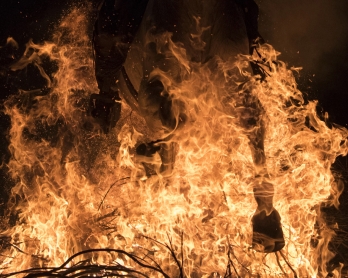The splendor of Carnevale in Venice
Venice -- There are few things in Italy as soaked in the aura of tradition and pageantry as the Carnevale di Venezia, a festival of make-believe that has unfolded along the canals of the northern city for nearly a thousand years.
Throughout its many incarnations, the Carnival of Venice was a time of merriment and excess that ended on Fat Tuesday -- a time to unwind before the somber forty days of the Christian Lent that lead up to Easter.
The first mention of it can be found in 1094 and it was made a public holiday in the then Republic of Venice in 1296. The revelry included jugglers, acrobats, musicians, dancers, theater and of course costumes and masks.
 (AFP / Filippo Monteforte)
(AFP / Filippo Monteforte)With the masks came the seedy underside of the celebrations, with the disguises used to commit all sorts of crimes and debauchery (this was libertine Venice after all) -- so much so that in 1339, the authorities banned the wearing of masks at night (robberies, etc); then forbid the entering of holy places with masks (robberies, etc); and then forbid men from dressing as women and entering convents to commit “indecent” acts (just use your imagination).
The carnival reached its peak in the 18th century, when Casanova roamed the canal-lined streets, going from party to love affair and back again.
When the Republic of Venice fell in 1797 and Austrians ruled the city, the Carnival was banned alltogether, except for private parties. And there it remained, behind the closed doors of the palazzos, until the end of the 20th century.
 (AFP / Filippo Monteforte)
(AFP / Filippo Monteforte)But the public carnival has come back with a vengeance since 1979, when the Italian authorities decided to actively promote it. Today the carnival’s two weeks are among the busiest in the city -- so much so that the authorities are considering putting a limit on the number of visitors.
I’ve been a news photographer in Italy for some 20 years and, believe it or not, have never been in Venice for the Carnevale -- I live in Rome and it was always such a busy time here that the northern photographers ended up covering the festivities. So when I learned that I would be doing it this year, I was quite excited -- it’s not only an aesthetically-pleasing event, but to me represents the best of Italian traditions.
 (AFP / Filippo Monteforte)
(AFP / Filippo Monteforte)
I shot the carnival’s opening weekend and have to say it was less than what I expected. The opening weekend and the first week are the quieter half of the festival, so there weren’t as many people dressed up as I expected. The busiest time is the last six days, when you have awards for best costumes and masks and you have a mask flying over St. Mark’s Square. Plus this year, it happened to snow a lot in the mountains, so many people went up to the Alps.
That said, the fact that it wasn’t so crowded made it really nice -- because it was calm you could take your time to work.
The highlight of the opening weekend is the regatta, when hundreds of boats and gondolas filled with dressed-up people take to the Grand Canal. It makes for quite a spectacle and some really nice pictures.
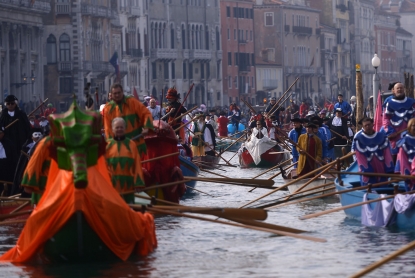 (AFP / Filippo Monteforte)
(AFP / Filippo Monteforte)The rest of the time, you spend mostly at St. Mark’s Square. That’s where everyone goes to hang out -- those who are dressed up go to be seen, and the onlookers go to stare. It’s a very festive atmosphere. People like to have their pictures taken. There are lots of families. Everything is open and everyone is generally very welcoming.
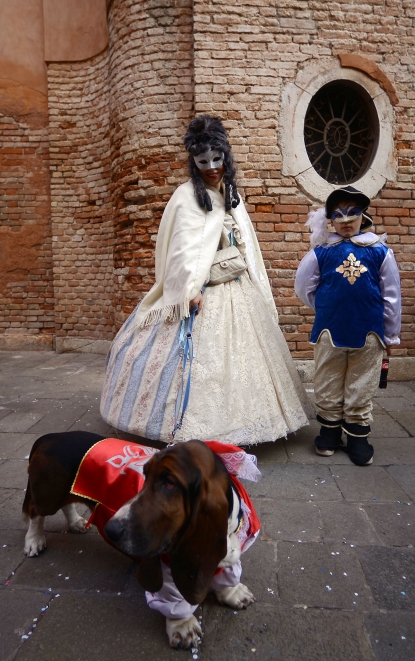 (AFP / Filippo Monteforte)
(AFP / Filippo Monteforte)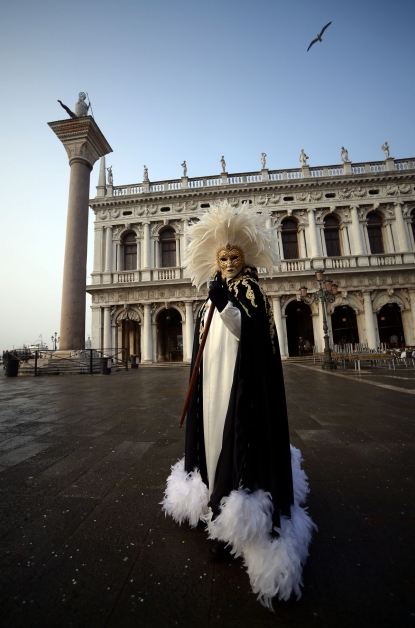 (AFP / Filippo Monteforte)
(AFP / Filippo Monteforte)
You get the traditional costumes and the masks. But you also get some modern, odd versions. I saw some people dressed as nuns, monks, flamencos. I saw a picture in a local newspaper of the mayor watching the canal parade dressed as Batman.
Having finally witnessed it first-hand, I can now understand why the Carnevale has survived for as long as it has. It really is something special.
It really does give a glimpse of traditional Italy. A huge dress-up party for grown-ups. In one of the world’s most beautiful and magical cities.
This blog was written with Yana Dlugy in Paris.
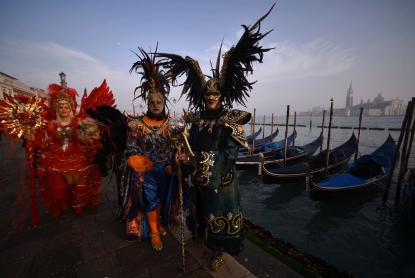 (AFP / Filippo Monteforte)
(AFP / Filippo Monteforte)




